For years, glamour models were painted as just eye candy-smiling in bikinis, posing for calendars, or appearing in men’s magazines. But that’s not the full story anymore. Today’s glamour models aren’t just selling looks; they’re selling confidence, control, and a redefined idea of beauty. They’re the ones pushing back against outdated standards, proving that curves, scars, stretch marks, and gray hairs belong on magazine covers too. This isn’t about seduction. It’s about sovereignty.
What Glamour Models Actually Do Now
Forget the old stereotype. Modern glamour modeling isn’t about being skinny, airbrushed, or silent. It’s about owning your image. These models work with brands that celebrate real bodies-companies like Savage X Fenty, Aerie, and Dove. They shoot campaigns for lingerie lines that offer sizes from XXS to 6X. They appear in editorial spreads alongside athletes, mothers, and survivors of breast cancer. Some even run their own businesses-selling skincare, fitness programs, or body-positive apparel.
Take Maria Lopez, a former Page 3 model turned entrepreneur. After leaving the industry in 2018, she launched a line of adaptive lingerie for post-surgery women. Her photos-no filters, no waist trainers-went viral. Within a year, she was featured in Elle UK and invited to speak at the UK Fashion & Textile Council. She didn’t become famous by shrinking herself. She became powerful by refusing to hide.
That’s the shift. Glamour models today are content creators, activists, and brand founders. Their Instagram feeds aren’t just selfies-they’re educational posts about body dysmorphia, mental health, and how to negotiate fair pay. They post unedited photos of cellulite and ask, Why are we ashamed of this?
How They’re Changing the Industry
The modeling industry used to run on rigid rules: no tattoos, no stretch marks, no visible scars, no age over 28. Those rules are crumbling. In 2023, the British Association of Model Agencies updated its guidelines to include body diversity as a core hiring standard. Major agencies like Storm Model Management and Models 1 now actively recruit models over 35, with stretch marks, and with disabilities.
It’s not just about ethics-it’s about business. A 2024 study by the Fashion Retail Academy found that campaigns featuring diverse body types saw a 37% higher engagement rate on social media than traditional ones. Brands noticed. They started hiring glamour models who looked like their actual customers, not airbrushed fantasies.
And it’s not just the UK. In Brazil, models with vitiligo are fronting global beauty campaigns. In Japan, women over 50 are starring in high-end lingerie ads. The global market for inclusive fashion is projected to hit $15 billion by 2027. Glamour models didn’t wait for permission. They built the demand themselves.
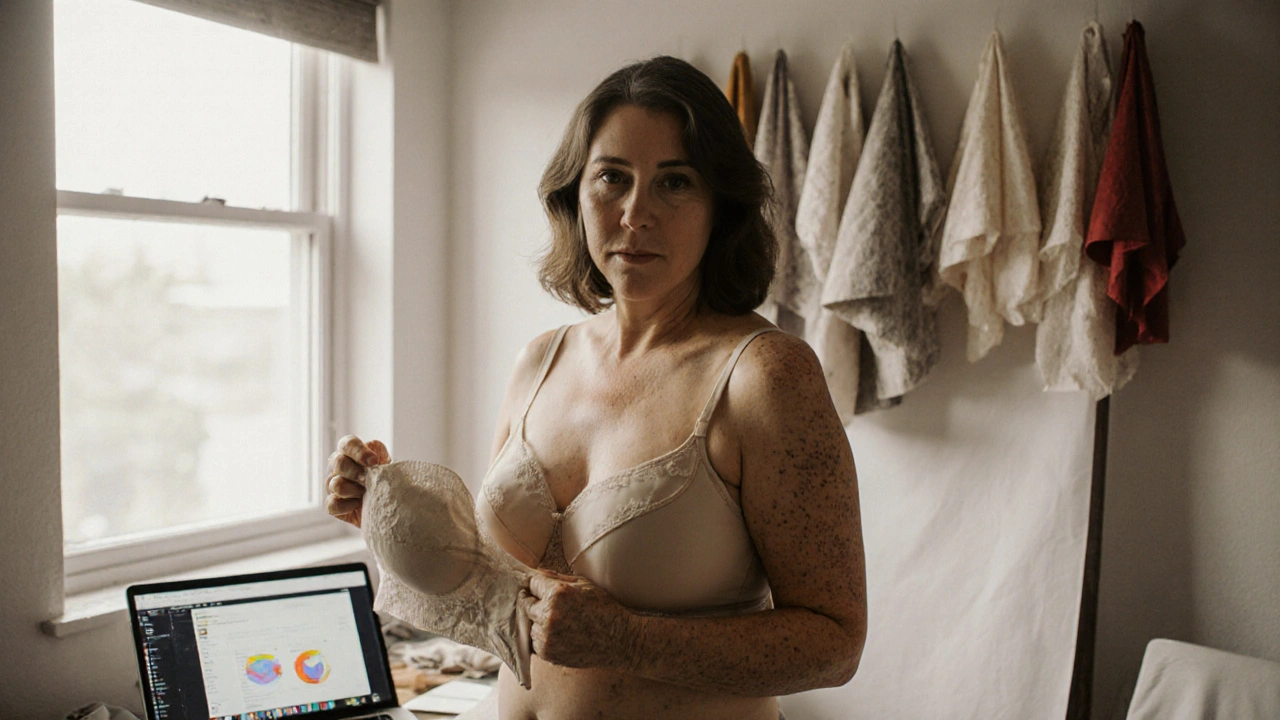
What It Takes to Be a Glamour Model Today
If you think glamour modeling is easy-just show up, smile, and get paid-you’re wrong. Today’s glamour models are entrepreneurs. They handle their own branding, editing, contracts, taxes, and mental health. Many work with no agency backing. They build their audience from scratch.
Here’s what actually works now:
- Authenticity over perfection. A photo with natural lighting, unshaved legs, and a real smile gets more engagement than a studio shot with zero imperfections.
- Consistency over virality. Posting three times a week with meaningful captions builds trust faster than one viral post with no follow-up.
- Education over exposure. Sharing your story-whether it’s about recovering from an eating disorder or learning to love your post-pregnancy body-creates deeper connections than any bikini shot ever could.
One model, Jasmine Carter, started posting daily body affirmations on TikTok in 2021. She didn’t have a huge following. But her videos-simple, quiet, honest-got shared by therapists, educators, and even NHS nurses. By 2024, she had a book deal and a speaking tour across 12 UK universities.
The Next Generation Is Watching
Young girls today aren’t looking up to Victoria’s Secret angels. They’re looking at models like Nabela Noor, Ashley Graham, and Tess Holliday-not because they’re flawless, but because they’re real. They see someone who talks about anxiety, who posts about periods, who says no to photoshoots that make her feel small.
And it’s changing how they see themselves. A 2025 survey by the Girls’ Health Project found that 68% of girls aged 13-17 now say they feel “more confident” after following glamour models who share their real lives. That’s not a trend. That’s a cultural reset.
When a 14-year-old girl sees a model with stretch marks on her stomach smiling in a bikini, she doesn’t think, She’s perfect. She thinks, She’s like me. And that’s revolutionary.
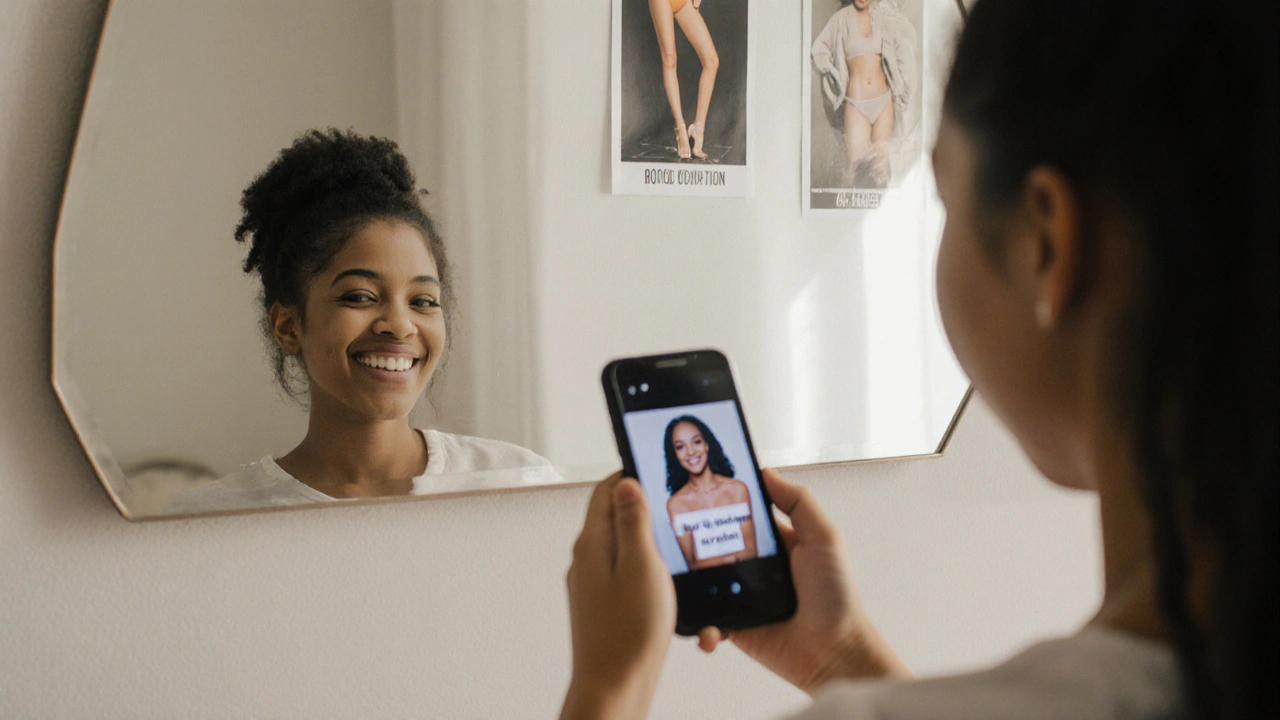
Why This Matters Beyond the Camera
Glamour modeling used to be about selling a dream. Now it’s about dismantling lies. The lie that beauty has one shape. The lie that confidence only comes with a size zero. The lie that women should apologize for taking up space.
These models are teaching a new generation that your worth isn’t tied to your waistline, your age, or your skin tone. That your body is not a project to fix. That you don’t need to be edited to be worthy of attention.
And that’s why they’re paving the way-not just for other models, but for every girl who’s ever looked in the mirror and felt ashamed.
What’s Next?
The future of glamour modeling isn’t about bigger budgets or more photoshoots. It’s about inclusion as a standard, not a trend. It’s about laws that protect models from forced weight loss. It’s about school programs that teach media literacy so kids know when an image is fake. It’s about brands being held accountable for using digital alterations without disclosure.
Some agencies are already testing “no retouching” contracts. Some magazines have banned airbrushing for stretch marks and cellulite. The UK’s Advertising Standards Authority now requires disclaimers on heavily edited images featuring body shape.
This isn’t a movement that’s going to fade. It’s a new normal-and glamour models are the ones who made it happen.
Are glamour models still only about sex appeal?
No. While glamour modeling once focused on sexualized imagery, today’s models are redefining the term. They use their platform to promote body positivity, mental health awareness, and self-acceptance. Many work with brands that prioritize authenticity over fantasy. Their work is less about seduction and more about empowerment.
Do glamour models need to be skinny?
Not anymore. The industry has shifted dramatically. Major agencies now actively seek models of all sizes, shapes, and ages. Brands like Savage X Fenty and Aerie feature models with curves, stretch marks, and scars. The focus is on diversity, not conformity. Being a glamour model today means having confidence in your body-not fitting into a size 6.
Can anyone become a glamour model?
Yes-if you’re willing to own your story. There’s no single look or body type required anymore. What matters is authenticity, consistency, and the ability to connect with an audience. Many successful glamour models started with just a phone and a social media account. They didn’t wait for permission. They built their own path.
How do glamour models make money today?
They earn through brand partnerships, social media sponsorships, digital products (like e-books or workout plans), live events, and even book deals. Many run their own businesses. Some also offer coaching or workshops on body confidence. Unlike the past, income isn’t tied to magazine covers-it’s tied to influence, trust, and community.
Is glamour modeling still relevant in 2025?
More than ever. With the rise of social media and the decline of traditional fashion magazines, glamour modeling has evolved into a form of personal branding and activism. It’s not about being seen-it’s about being heard. Models who speak truth about body image, mental health, and self-worth are shaping culture, not just posing for cameras.


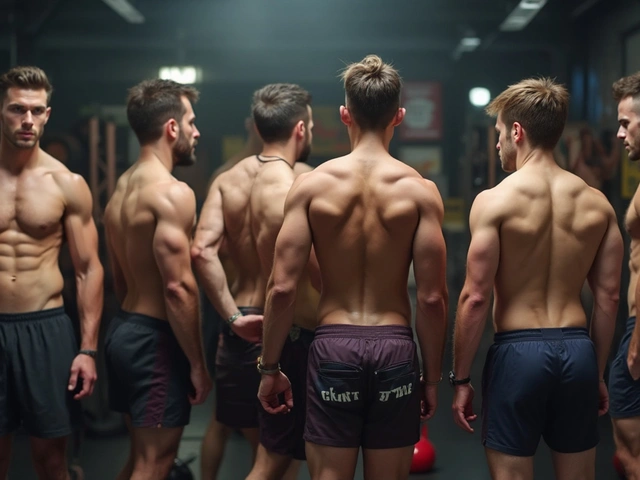


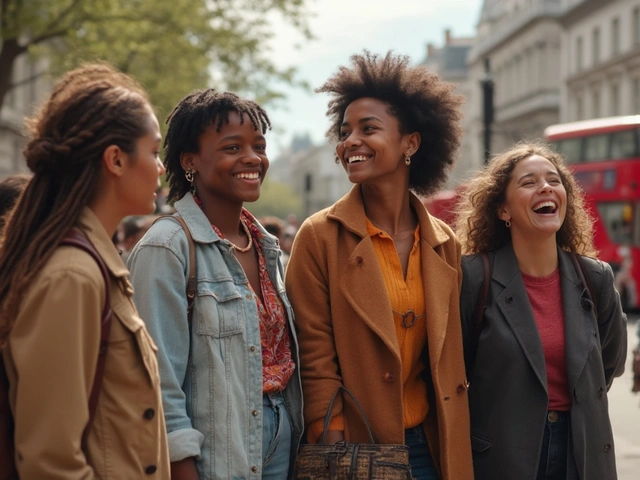
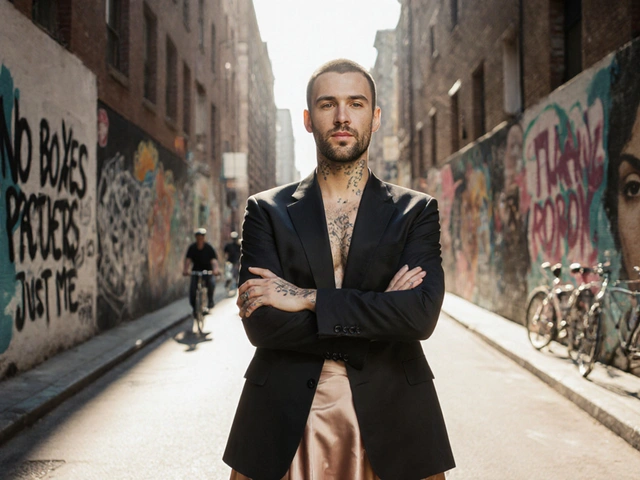

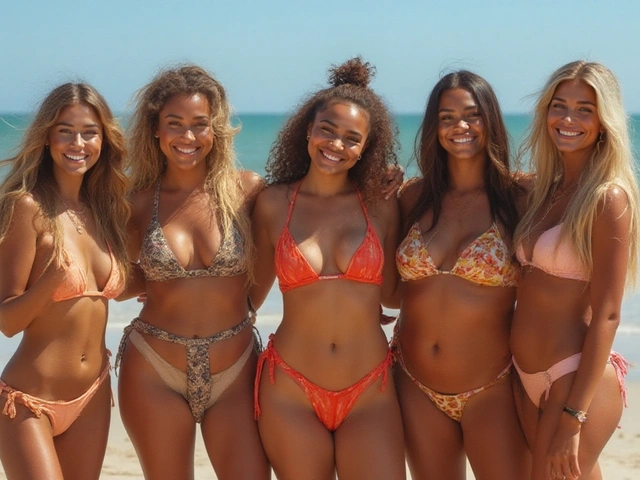
November 12, 2025 AT 01:47
j t
ok but like... why do we even need to glorify this? i mean, sure, they’re ‘empowering’ themselves by posting pics in bras with stretch marks-cool, i guess. but at the end of the day, it’s still just skin for sale. you think a 14-year-old girl sees that and thinks ‘wow, self-worth’? nah. she sees ‘hot girl with cellulite’ and still feels like she’s not enough because she’s not posing for a brand. this isn’t revolution. it’s rebranding. they’re just selling the same thing with a different label. and now they get paid more for it. genius.
also, who lets these people write books? i read one of jasmine carter’s ‘body affirmations’ and it was just ‘you’re beautiful’ repeated 50 times. that’s not education. that’s a post-it note with a heartbeat.
and don’t get me started on ‘no retouching contracts.’ if your skin looks like that in real life, you probably need a dermatologist, not a magazine cover. this isn’t body positivity-it’s performance art for people who hate mirrors.
we used to have standards. now we have ‘you’re fine as you are’ and a $200 leggings line. i miss when beauty was about aspiration, not apology.
and why does every single one of these ‘activists’ have a merch store? it’s not empowerment if you’re selling it. it’s capitalism with a yoga mat.
they’re not changing the industry. they’re just making it more expensive to look ‘real.’
also, why are we calling this ‘glamour’? glamour used to mean mystery. now it means ‘here’s my armpit hair and my trauma.’ i don’t want to be inspired by someone’s cellulite. i want to be inspired by someone who’s better than me. that’s how you grow.
and if you think this is ‘revolution,’ you’ve never seen a real revolution. revolutions involve barricades, not instagram stories.
also, i’m pretty sure the ‘68% more confident’ stat was pulled from a survey of 12 girls in a facebook group. don’t act like this is science.
we’re not elevating women. we’re lowering the bar until everyone’s standing on it.
and don’t tell me ‘it’s about choice.’ choice doesn’t make it meaningful. it just makes it marketable.
November 13, 2025 AT 02:16
Kiana Rigney
the performative authenticity industrial complex has officially peaked. let’s not confuse commodified vulnerability with liberation. these ‘glamour models’ are just leveraging trauma capitalism under the guise of ‘body sovereignty’-a term i’m pretty sure was coined by a marketing intern at a sustainable lingerie startup in brooklyn.
the data? 37% higher engagement? duh. outrage and relatability are the new dopamine triggers. you don’t need to be beautiful-you just need to be ‘relatable.’ and by ‘relatable,’ i mean ‘unfiltered’-which, in algorithmic terms, translates to ‘slightly messy, slightly traumatized, and slightly profitable.’
also, ‘adaptive lingerie for post-surgery women’? that’s not activism. that’s a niche market with a higher profit margin than standard sizing. and don’t get me started on the ‘no retouching’ contracts. they still airbrush the background, the lighting, the angle, the expression. they just leave the cellulite. that’s not transparency. that’s selective truth-telling. it’s the same old manipulation, just with a different filter.
and the ‘education’ posts? they’re not teaching media literacy-they’re teaching emotional dependency. ‘you’re worthy’ isn’t a mantra. it’s a product placement.
the real revolution? when a model doesn’t need to post a photo of her scars to be hired. when beauty isn’t a resume. when the industry stops rewarding trauma and starts rewarding talent.
until then? this isn’t empowerment. it’s exploitation with better PR.
November 14, 2025 AT 10:36
Hannah Johnson
okay but y’all are missing the point so hard. this isn’t about ‘selling skin’ or ‘trauma capitalism’-this is about real girls finally seeing someone who looks like them and thinking, ‘wait, maybe i’m not broken.’
you think a 13-year-old with acne and stretch marks cares about your ‘performative authenticity’ rant? no. she cares that someone on her feed posted a photo with the caption ‘this is what 38 looks like after two kids’ and didn’t delete it because it wasn’t perfect.
maria lopez didn’t launch a lingerie line to make money-she did it because she couldn’t find anything that fit after her mastectomy. that’s not marketing. that’s survival.
and jasmine carter’s ‘you’re beautiful’ videos? those aren’t post-its. they’re lifelines. i’ve had teens DM me saying those videos kept them from quitting school because they felt seen.
yes, it’s marketable. so what? if a brand profits while helping someone feel safe in their skin, that’s not capitalism-it’s progress.
you don’t need to like it. but don’t pretend you’re protecting ‘real beauty’ when your version of beauty is just a filtered version of the same old lie.
the real revolution? when a kid doesn’t need a model to tell her she’s worthy-because society already believes it. we’re not there yet. but these women? they’re building the bridge.
so if you’re mad they’re making money while being real? good. that means they’re winning.
November 16, 2025 AT 02:44
Anna Krol
honestly? i’m from poland and i’ve seen this shift happen in europe too. in berlin, there’s a model named elena who has a prosthetic leg and does runway shows in wheelchairs. in tokyo, i saw a 56-year-old woman in a silk slip campaign for a japanese luxury brand-no filters, just confidence.
it’s not just about ‘us vs them’ or ‘capitalism vs truth.’ it’s about visibility. when you grow up seeing only one kind of beauty, you start believing you don’t belong. these models? they’re saying ‘you do.’
i remember when i was 16, i cried because i didn’t look like the girls in magazines. now my niece watches tiktok clips of women with vitiligo dancing in bikinis and says, ‘i want to be like them.’
that’s not marketing. that’s healing.
and yeah, some of them sell stuff. so what? if selling a $40 bra means a girl stops hating her body for a day? worth it.
the industry is changing because people demanded it-not because a CEO woke up and got woke. it’s grassroots. messy, loud, imperfect. but real.
and honestly? i think the people who hate this the most are the ones who still believe beauty is a prize you earn by shrinking yourself.
we’re not lowering the bar. we’re burning it down and building a whole new playground.
November 17, 2025 AT 07:48
Chaunt Elyza
OMG YES 😭 THIS IS THE MOST IMPORTANT THING EVER 💪✨
THEY’RE NOT JUST MODELS-THEY’RE HEROES 🦸♀️❤️
MY SISTER HAD BREAST CANCER AND SHE SAID THE FIRST TIME SHE SAW A MODEL WITH A SCAR ON HER COVER SHE CRIED FOR 20 MINUTES 😭
NO FILTERS = NO LIES 🙌
THEY’RE NOT ‘SELLING VULNERABILITY’-THEY’RE SELLING TRUTH 💯
AND IF YOU’RE MAD THEY’RE MAKING MONEY? GOOD. THEY DESERVE TO. THEY WORKED FOR IT 💥
WHY ARE WE STILL ARGUING ABOUT THIS IN 2025?? 🤦♀️
THEY’RE NOT ‘PERFORMING’-THEY’RE LIVING.
AND IF YOU THINK A 14-YEAR-OLD GIRL ISN’T CHANGED BY THIS? YOU’RE THE PROBLEM. 🚫
JUST BE HAPPY THEY’RE HERE. 🤗💖
#BODYPOSITIVE #NOFILTER #THEYREWINNING
November 19, 2025 AT 04:10
Katie Schiffer
you’re all overthinking this. it’s not about capitalism, it’s not about trauma, it’s not about ‘performative’ anything.
it’s simple: for decades, girls were told they had to be small to be beautiful. now? they’re being told they’re beautiful exactly as they are.
that’s not a trend. that’s a tide.
you don’t need to understand it. you don’t need to like it. but you can’t unsee it.
and guess what? the girls who grew up with this? they’re not going back. they’re not going to accept airbrushed lies. they’re not going to apologize for taking up space.
the industry didn’t change because someone in a boardroom had a change of heart. it changed because a thousand girls posted their unfiltered photos and said ‘this is me’-and millions said ‘me too.’
you want to call it marketing? fine. but marketing that heals? that’s the kind we need more of.
the next generation isn’t waiting for permission. they’re building it.
and honestly? i’m proud of them.
if you’re not? that’s your problem. not theirs.
November 20, 2025 AT 20:40
John Irving
absolute nonsense. this is what happens when you let woke culture take over fashion. we used to have standards. now we have ‘anybody can be a model’ and ‘stretch marks are sexy.’
in australia, we still respect discipline. you don’t get on a runway if you look like you just rolled out of bed with a bag of chips.
and don’t get me started on ‘no retouching.’ if your skin looks like that in real life, you’re not a model-you’re a cautionary tale.
the fact that this is even a topic? laughable. it’s not empowerment. it’s a downgrade.
and who’s funding this? american corporations trying to sell more leggings to guilt-tripped moms.
we’re not moving forward. we’re collapsing.
and don’t tell me ‘it’s about confidence.’ confidence doesn’t come from posting your belly roll. it comes from discipline. from fitness. from looking good because you earned it.
not because someone told you your cellulite is ‘beautiful.’
that’s not beauty. that’s surrender.